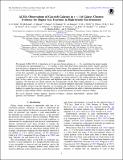| dc.contributor.author | Muzzin, A. | |
| dc.contributor.author | Nantais, J. | |
| dc.contributor.author | Rudnick, G. | |
| dc.contributor.author | van Kampen, E. | |
| dc.contributor.author | Webb, T. M. A. | |
| dc.contributor.author | Wilson, G. | |
| dc.contributor.author | Yee, H. K. C. | |
| dc.contributor.author | Boone, K. | |
| dc.contributor.author | Cooper, M. C. | |
| dc.contributor.author | DeGroot, A. | |
| dc.contributor.author | Delahaye, A. | |
| dc.contributor.author | Demarco, R. | |
| dc.contributor.author | Foltz, R. | |
| dc.contributor.author | Hayden, B. | |
| dc.contributor.author | Lidman, C. | |
| dc.contributor.author | Manilla-Robles, A. | |
| dc.contributor.author | Perlmutter, S. | |
| dc.contributor.author | Noble, Allison G | |
| dc.contributor.author | McDonald, Michael A. | |
| dc.date.accessioned | 2018-03-14T15:06:10Z | |
| dc.date.available | 2018-03-14T15:06:10Z | |
| dc.date.issued | 2017-06 | |
| dc.date.submitted | 2017-06 | |
| dc.identifier.issn | 2041-8213 | |
| dc.identifier.issn | 2041-8205 | |
| dc.identifier.uri | http://hdl.handle.net/1721.1/114149 | |
| dc.description.abstract | We present ALMA CO (2-1) detections in 11 gas-rich cluster galaxies at z ∼ 1.6, constituting the largest sample of molecular gas measurements in z > 1.5 clusters to date. The observations span three galaxy clusters, derived from the Spitzer Adaptation of the Red-sequence Cluster Survey. We augment the > 5σ detections of the CO (2-1) fluxes with multi-band photometry, yielding stellar masses and infrared-derived star formation rates, to place some of the first constraints on molecular gas properties in z ∼ 1.6 cluster environments. We measure sizable gas reservoirs of 0.5-2 × 10¹¹ M in these objects, with high gas fractions (f gas ) and long depletion timescales (τ), averaging 62% and 1.4 Gyr, respectively. We compare our cluster galaxies to the scaling relations of the coeval field, in the context of how gas fractions and depletion timescales vary with respect to the star-forming main sequence. We find that our cluster galaxies lie systematically off the field scaling relations at z = 1.6 toward enhanced gas fractions, at a level of ∼4σ, but have consistent depletion timescales. Exploiting CO detections in lower-redshift clusters from the literature, we investigate the evolution of the gas fraction in cluster galaxies, finding it to mimic the strong rise with redshift in the field. We emphasize the utility of detecting abundant gas-rich galaxies in high-redshift clusters, deeming them as crucial laboratories for future statistical studies. Keywords: galaxies: clusters: general; galaxies: evolution; galaxies: high-redshift; galaxies: ISM;
galaxies: star formation; infrared: galaxies | en_US |
| dc.description.sponsorship | National Science Foundation (U.S.) (Grant AST-1517815) | en_US |
| dc.description.sponsorship | National Science Foundation (U.S.) (Grant AST-1211358) | en_US |
| dc.description.sponsorship | National Science Foundation (U.S.) (Grant AST-1517863) | en_US |
| dc.description.sponsorship | National Science Foundation (U.S.) (Grant AST-1518257) | en_US |
| dc.description.sponsorship | United States. National Aeronautics and Space Administration (Program AR-14310.001) | en_US |
| dc.description.sponsorship | United States. National Aeronautics and Space Administration (Program GO-12945.001-A) | en_US |
| dc.description.sponsorship | United States. National Aeronautics and Space Administration (Program GO-13306) | en_US |
| dc.description.sponsorship | United States. National Aeronautics and Space Administration (Program GO-13677) | en_US |
| dc.description.sponsorship | United States. National Aeronautics and Space Administration (Program GO-13747) | en_US |
| dc.publisher | IOP Publishing | en_US |
| dc.relation.isversionof | http://dx.doi.org/10.3847/2041-8213/AA77F3 | en_US |
| dc.rights | Article is made available in accordance with the publisher's policy and may be subject to US copyright law. Please refer to the publisher's site for terms of use. | en_US |
| dc.title | ALMA Observations of Gas-rich Galaxies in z ~ 1.6 Galaxy Clusters: Evidence for Higher Gas Fractions in High-density Environments | en_US |
| dc.type | Article | en_US |
| dc.identifier.citation | Noble, A. G. et al. “ALMA Observations of Gas-Rich Galaxies in z ∼ 1.6 Galaxy Clusters: Evidence for Higher Gas Fractions in High-Density Environments.” The Astrophysical Journal 842, 2 (June 2017): L21 © 2017 The American Astronomical Society | en_US |
| dc.contributor.department | Massachusetts Institute of Technology. Department of Physics | en_US |
| dc.contributor.department | MIT Kavli Institute for Astrophysics and Space Research | en_US |
| dc.contributor.mitauthor | Noble, Allison G | |
| dc.contributor.mitauthor | McDonald, Michael A. | |
| dc.relation.journal | Astrophysical Journal Letters | en_US |
| dc.eprint.version | Final published version | en_US |
| dc.type.uri | http://purl.org/eprint/type/JournalArticle | en_US |
| eprint.status | http://purl.org/eprint/status/PeerReviewed | en_US |
| dc.date.updated | 2018-02-16T14:54:37Z | |
| dspace.orderedauthors | Noble, A. G.; McDonald, M.; Muzzin, A.; Nantais, J.; Rudnick, G.; van Kampen, E.; Webb, T. M. A.; Wilson, G.; Yee, H. K. C.; Boone, K.; Cooper, M. C.; DeGroot, A.; Delahaye, A.; Demarco, R.; Foltz, R.; Hayden, B.; Lidman, C.; Manilla-Robles, A.; Perlmutter, S. | en_US |
| dspace.embargo.terms | N | en_US |
| dc.identifier.orcid | https://orcid.org/0000-0001-5226-8349 | |
| mit.license | PUBLISHER_POLICY | en_US |
